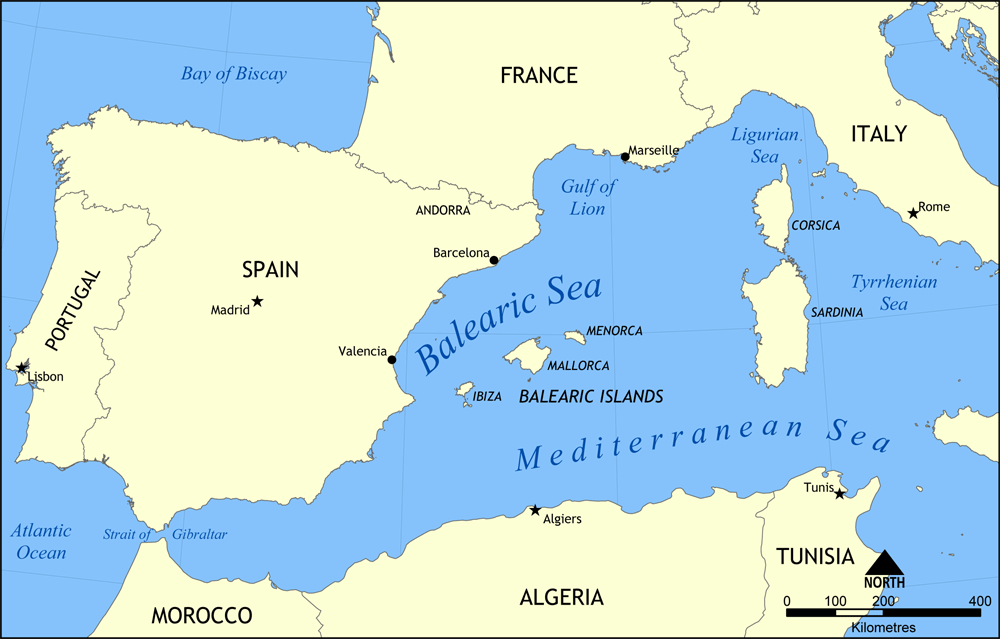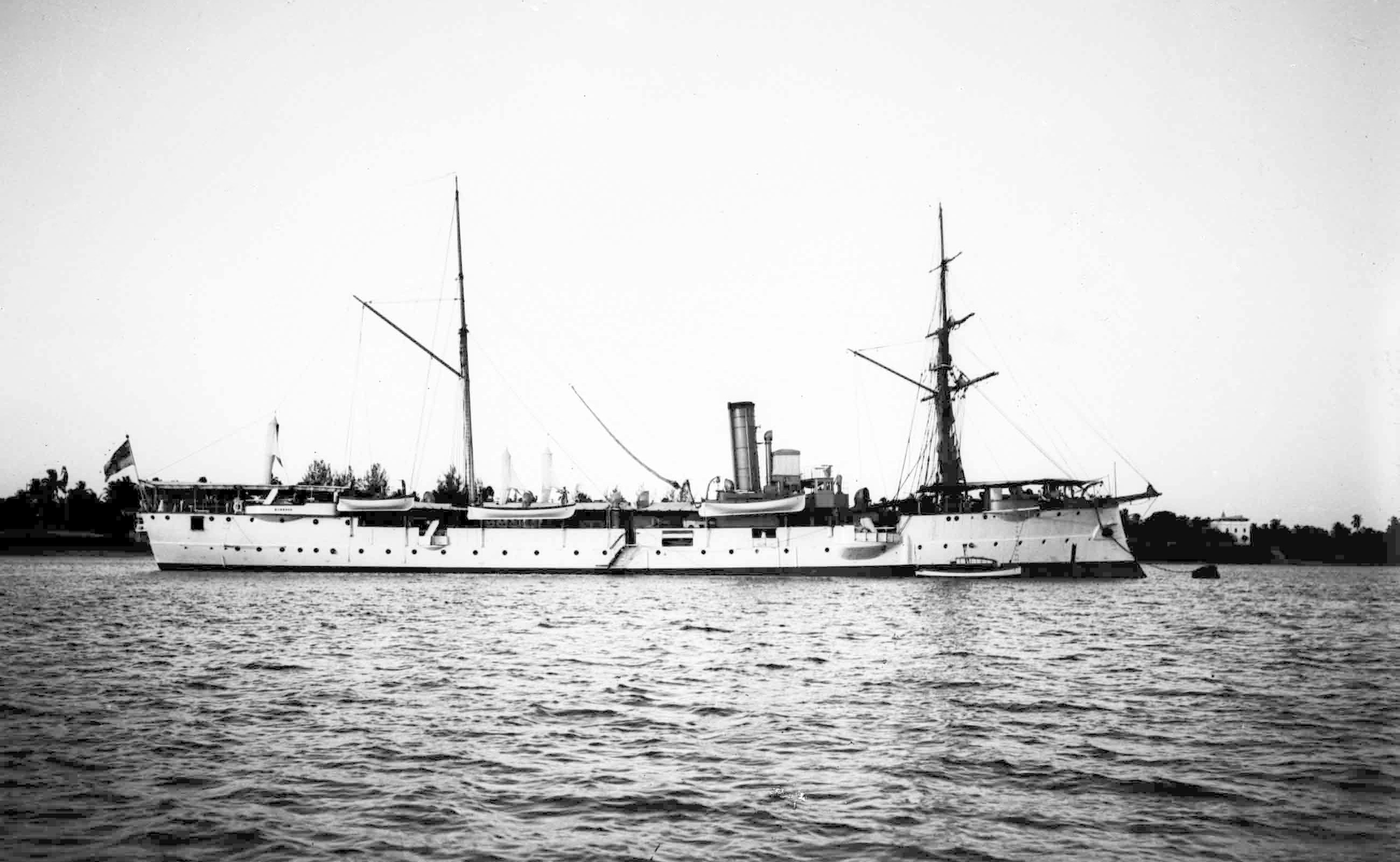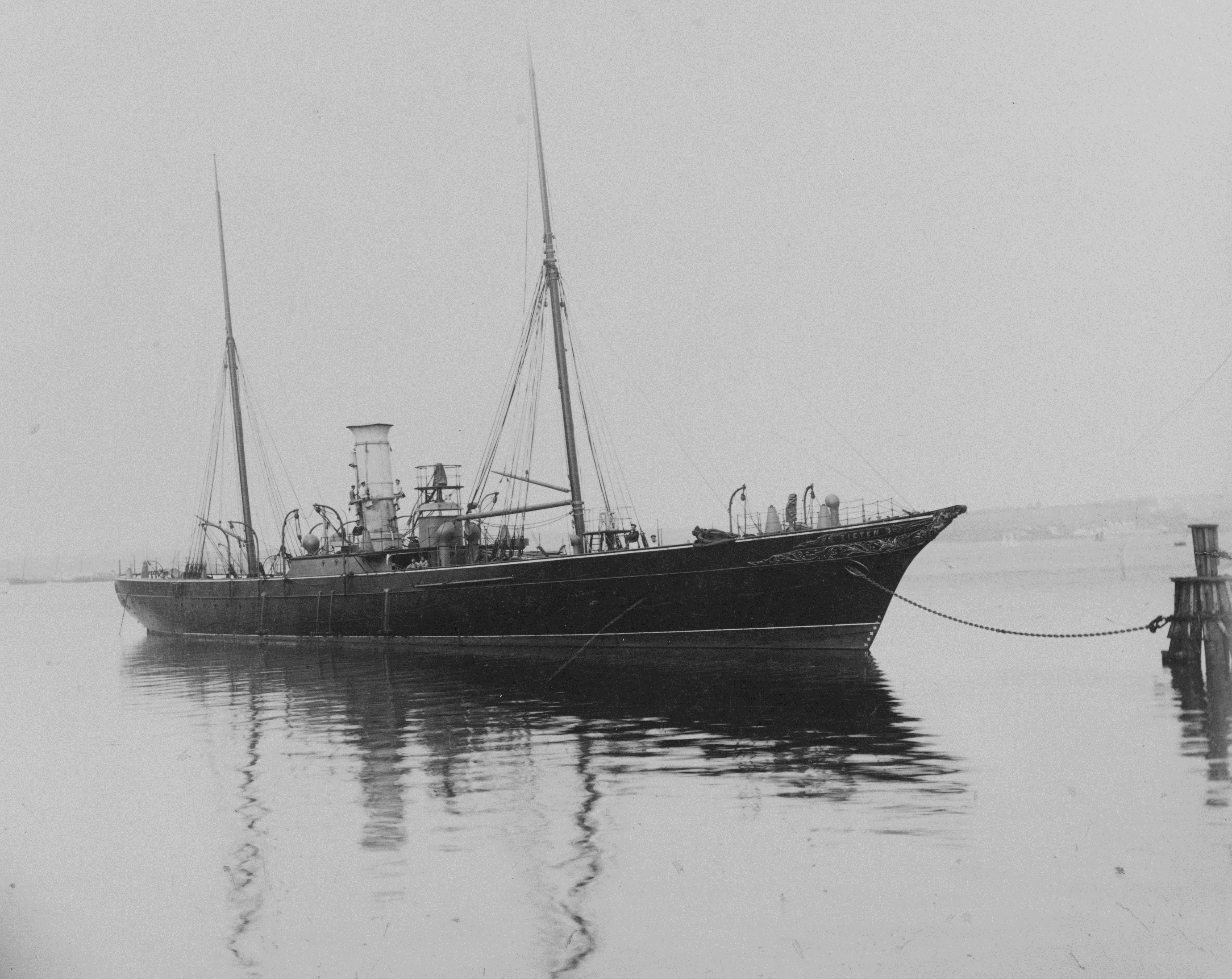|
Unprotected Cruiser
An unprotected cruiser was a type of naval warship in use during the early 1870s Victorian or pre-dreadnought era (about 1880 to 1905). The name was meant to distinguish these ships from “ protected cruisers”, which had become accepted in the 1880s. A protected cruiser did not have side armor on its hull like a battleship or “ armored cruiser” but had only a curved armored deck built inside the ship — like an internal turtle shell — which prevented enemy fire penetrating through the ship down into the most critical areas such as machinery, boilers, and ammunition storage. An unprotected cruiser lacked even this level of internal protection. The definitions had some gray areas, because individual ships could be built with a protective deck that did not cover more than a small area of the ship, or was so thin as to be of little value. The same was true of the side armor on some armored cruisers. An unprotected cruiser was generally cheaper and less effective ... [...More Info...] [...Related Items...] OR: [Wikipedia] [Google] [Baidu] |
Victorian Era
In the history of the United Kingdom and the British Empire, the Victorian era was the period of Queen Victoria's reign, from 20 June 1837 until her death on 22 January 1901. The era followed the Georgian period and preceded the Edwardian period, and its later half overlaps with the first part of the ''Belle Époque'' era of Continental Europe. There was a strong religious drive for higher moral standards led by the nonconformist churches, such as the Methodists and the evangelical wing of the established Church of England. Ideologically, the Victorian era witnessed resistance to the rationalism that defined the Georgian period, and an increasing turn towards romanticism and even mysticism in religion, social values, and arts. This era saw a staggering amount of technological innovations that proved key to Britain's power and prosperity. Doctors started moving away from tradition and mysticism towards a science-based approach; medicine advanced thanks to the adopti ... [...More Info...] [...Related Items...] OR: [Wikipedia] [Google] [Baidu] |
French Cruiser Milan
''Milan'' was a late-19th-century unprotected cruiser in the French Navy. At the time of her completion, ''Milan'' was considered by several publications to be the fastest warship in the world. The warship was the last unprotected cruiser in French naval service, and ''Milan'''s design influenced the construction of later protected cruisers. Design By the late 1870s, senior officers in the French Navy had come to the realization that the unprotected cruisers and avisos then in the fleet's inventory were too slow to serve as effective scouts for the main battle fleet. The (Council of Works) of the French Navy issued a request for a new cruiser design that incorporated a high top speed and an armament solely consisting of the recently developed Whitehead torpedoes. The new ship was to have no sails, guns, or ram. Displacement was limited to around . The French naval engineer Louis-Émile Bertin had designed and proposed such a ship as early as 1875, and the examined his preli ... [...More Info...] [...Related Items...] OR: [Wikipedia] [Google] [Baidu] |
List Of Unprotected Cruisers Of Germany
In the 1880s and 1890s, Germany built nine unprotected cruisers in three ship class, classes. These ships proved to be transitional designs, and experience gathered with them and a series of avisos helped to produce the first light cruisers of the German Navy. The unprotected cruisers, generally designed for service in German colonial empire, Germany's colonial empire, required great endurance and relatively heavy firepower. The first ships of the type, the two s, were acquired in an effort to modernize an aged cruiser force that relied primarily on old sail frigates. The new ships were primarily steam-powered but retained auxiliary sailing rigs. The second design, the , was larger than the class and mounted newer, quick-firing guns, but was otherwise generally similar in capabilities. , the final cruiser of the type, represented an attempt to merge the requirements for a colonial cruiser with those for a fleet scout as a result of Germany's chronically small naval budget; the d ... [...More Info...] [...Related Items...] OR: [Wikipedia] [Google] [Baidu] |
Destroyer
In naval terminology, a destroyer is a fast, manoeuvrable, long-endurance warship intended to escort larger vessels in a fleet, convoy or battle group and defend them against powerful short range attackers. They were originally developed in 1885 by Fernando Villaamil for the Spanish NavySmith, Charles Edgar: ''A short history of naval and marine engineering.'' Babcock & Wilcox, ltd. at the University Press, 1937, page 263 as a defense against torpedo boats, and by the time of the Russo-Japanese War in 1904, these "torpedo boat destroyers" (TBDs) were "large, swift, and powerfully armed torpedo boats designed to destroy other torpedo boats". Although the term "destroyer" had been used interchangeably with "TBD" and "torpedo boat destroyer" by navies since 1892, the term "torpedo boat destroyer" had been generally shortened to simply "destroyer" by nearly all navies by the First World War. Before World War II, destroyers were light vessels with little endurance for unat ... [...More Info...] [...Related Items...] OR: [Wikipedia] [Google] [Baidu] |
Light Cruiser
A light cruiser is a type of small or medium-sized warship. The term is a shortening of the phrase "light armored cruiser", describing a small ship that carried armor in the same way as an armored cruiser: a protective belt and deck. Prior to this smaller cruisers had been of the protected cruiser model, possessing armored decks only. While lighter and smaller than other contemporary ships they were still true cruisers, retaining the extended radius of action and self-sufficiency to act independently around the world. Through their history they served in a variety of roles, primarily as convoy escorts and destroyer command ships, but also as scouts and fleet support vessels for battle fleets. Origins and development The first small steam-powered cruisers were built for the British Royal Navy with HMS ''Mercury'' launched in 1878. Such second and third class protected cruisers evolved, gradually becoming faster, better armed and better protected. Germany took a lead in small cru ... [...More Info...] [...Related Items...] OR: [Wikipedia] [Google] [Baidu] |
World War I
World War I (28 July 1914 11 November 1918), often abbreviated as WWI, was List of wars and anthropogenic disasters by death toll, one of the deadliest global conflicts in history. Belligerents included much of Europe, the Russian Empire, the United States, and the Ottoman Empire, with fighting occurring throughout Europe, the Middle East, Africa, the Pacific Ocean, Pacific, and parts of Asia. An estimated 9 million soldiers were killed in combat, plus another 23 million wounded, while 5 million civilians died as a result of military action, hunger, and disease. Millions more died in Genocides in history (World War I through World War II), genocides within the Ottoman Empire and in the Spanish flu, 1918 influenza pandemic, which was exacerbated by the movement of combatants during the war. Prior to 1914, the European great powers were divided between the Triple Entente (comprising French Third Republic, France, Russia, and British Empire, Britain) and the Triple A ... [...More Info...] [...Related Items...] OR: [Wikipedia] [Google] [Baidu] |
Torpedo Gunboat
In late 19th-century naval terminology, torpedo gunboats were a form of gunboat armed with torpedoes and designed for hunting and destroying smaller torpedo boats. By the end of the 1890s torpedo gunboats were superseded by their more successful contemporaries, the torpedo boat destroyers. History A number of torpedo gunboats, the prototype ''Rattlesnake'' of 1886 followed by the ''Grasshopper'' class (of 3 vessels), the ''Sharpshooter'' class (13 vessels), the ''Alarm'' class (11 vessels) and the ''Dryad'' class (5 vessels), were built for the Royal Navy during the 1880s and the 1890s; similar vessels were also constructed or otherwise acquired by a number of European nations and Japan. Essentially very small cruisers, torpedo gunboats were typically fitted with locomotive boilers, and were equipped with torpedo tubes and an adequate gun armament, intended for hunting down smaller enemy torpedo boats. In practice they failed in their primary objective, as they were not ... [...More Info...] [...Related Items...] OR: [Wikipedia] [Google] [Baidu] |
Torpedo Cruiser
A torpedo cruiser is a type of warship that is armed primarily with torpedoes. The major navies began building torpedo cruisers shortly after the invention of the locomotive Whitehead torpedo in the 1860s. The development of the torpedo gave rise to the ''Jeune École'' doctrine, which held that small warships armed with torpedoes could effectively and cheaply defeat much larger battleships. Torpedo cruisers fell out of favor in most of the great power navies in the 1890s, though many other navies continued to acquire them into the early 1900s. The Imperial Japanese Navy rebuilt two light cruisers into torpedo cruisers during World War II. Unlike the earlier vessels, these ships were intended to launch their Long Lance oxygen torpedoes at extreme range at night to surprise enemy warships. They never saw action in their intended role, however, and were quickly converted into troop transports. History The torpedo cruiser emerged from the ''Jeune École'', a strategic naval concep ... [...More Info...] [...Related Items...] OR: [Wikipedia] [Google] [Baidu] |
Dispatch Boat
Dispatch boats were small boats, and sometimes large ships, tasked to carry military dispatches from ship to ship or from ship to shore or, in some cases from shore to shore. Dispatch boats were employed when other means of transmitting a message was not possible or safe or as quick. Dispatch boats, which performed their dispatch-carrying duties only on a temporary basis, should not be confused with packet ships—sometimes called packet boats or paquetbots—which were cargo ships which also routinely carried the mail from port to port. Generally, dispatch boats served the military, and paquetbots served commerce. Use of term by the U.S. Navy ''Dispatch boat'' was a term used by the United States Navy in its journal accounts to describe boats which carried messages, or mail—otherwise termed dispatches—between high-ranking military officials aboard other ships or to land-based destinations. Dispatch boats during the American Revolution In 1776 the Continental Navy ship '' ... [...More Info...] [...Related Items...] OR: [Wikipedia] [Google] [Baidu] |
Aviso
An ''aviso'' was originally a kind of dispatch boat or "advice boat", carrying orders before the development of effective remote communication. The term, derived from the Portuguese and Spanish word for "advice", "notice" or "warning", an ''aviso'', was later adopted by the French and Portuguese navies to classify their medium-sized warships designed for colonial service. The term continued to be used in the French Navy to classify the patrol frigates until 2012, when the remaining ships of the class were reclassified as offshore patrol ships. It is equivalent to the modern use of "sloop" in other countries. Description The ''Dictionnaire de la Marine Française 1788–1792'' (by Nicolas-Charles Romme) describes ''avisos'' as "small boats designed to carry orders or dispatches". This use became obsolete with the development of means of communicating detailed information at a distance. French ''avisos'' used during World War I and World War II had displacements of 300– ... [...More Info...] [...Related Items...] OR: [Wikipedia] [Google] [Baidu] |
Corvette
A corvette is a small warship. It is traditionally the smallest class of vessel considered to be a proper (or " rated") warship. The warship class above the corvette is that of the frigate, while the class below was historically that of the sloop-of-war. The modern roles that a corvette fulfills include coastal patrol craft, missile boat and fast attack craft. These corvettes are typically between 500 tons and 2,000 .although recent designs may approach 3,000 tons, having size and capabilities that overlap with smaller frigates. However unlike contemporary frigates, a modern corvette does not have sufficient endurance and seaworthiness for long voyages. The word "corvette" is first found in Middle French, a diminutive of the Dutch word ''corf'', meaning a "basket", from the Latin ''corbis''. The rank " corvette captain", equivalent in many navies to " lieutenant commander", derives from the name of this type of ship. The rank is the most junior of three "captain" ranks in s ... [...More Info...] [...Related Items...] OR: [Wikipedia] [Google] [Baidu] |
Pre-dreadnought Battleship
Pre-dreadnought battleships were sea-going battleships built between the mid- to late- 1880s and 1905, before the launch of in 1906. The pre-dreadnought ships replaced the ironclad battleships of the 1870s and 1880s. Built from steel, protected by case-hardened steel armour, and powered by coal-fired triple-expansion steam engines, pre-dreadnought battleships carried a main battery of very heavy guns in fully enclosed rotating turrets supported by one or more secondary batteries of lighter weapons. In contrast to the multifarious development of ironclad warships in preceding decades, the 1890s saw navies worldwide start to build battleships to a common design as dozens of ships essentially followed the design of the Royal Navy's . The similarity in appearance of battleships in the 1890s was underlined by the increasing number of ships being built. New naval powers such as Germany, Japan, the United States, and to a lesser extent Italy and Austria-Hungary, began to estab ... [...More Info...] [...Related Items...] OR: [Wikipedia] [Google] [Baidu] |










